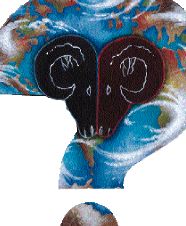 | |
|
You're getting warmer....
A York university professor and one of his students have masterminded a new biological theory that's turning heads in the scientific community. In a paper published in Nature magazine, York PhD student Jeremy Kerr and supervisor, biology professor Laurence Parker, challenge the commonly-held belief that heat energy is the reason there are more species of animals in Earth's warmer regions than in its cold ones. Kerr and Packer's paper offers another clue in the scientific debate about why the number and variety of species increase the further one gets from the Earth's poles. Their paper disputes the prevailing theories about why there are more species in warmer areas, and especially pokes holes in an established theory known as the "energy species-richness (ESR) hypothesis." The ESR theory argues that the diversity of mammals in North America bears a direct relationship to the availability of energy (heat). Kerr and Packer's findings conclude that although the ESR hypothesis is true in colder parts of North America, the relationship disappears as you move south -- in other words, one crosses a threshold where energy limits species diversity. In fact, the threshold is reached around the Canada-U.S. border. "We found that in the cool regions of North America, there's a very strong relationship between energy availability and the number of species. But when you move southward, it become irrelevant," Kerr says. Kerr and Packer suggest topographic fluctuations are far more important in determining richness of mammal species than ESR. Although their paper only deals with mammals, they say their theory likely holds true for insects as well. |
|
Text Menu [ Home | Past Issues | Subscriptions | Contact Us | Site Map | Search Profiles ] |
